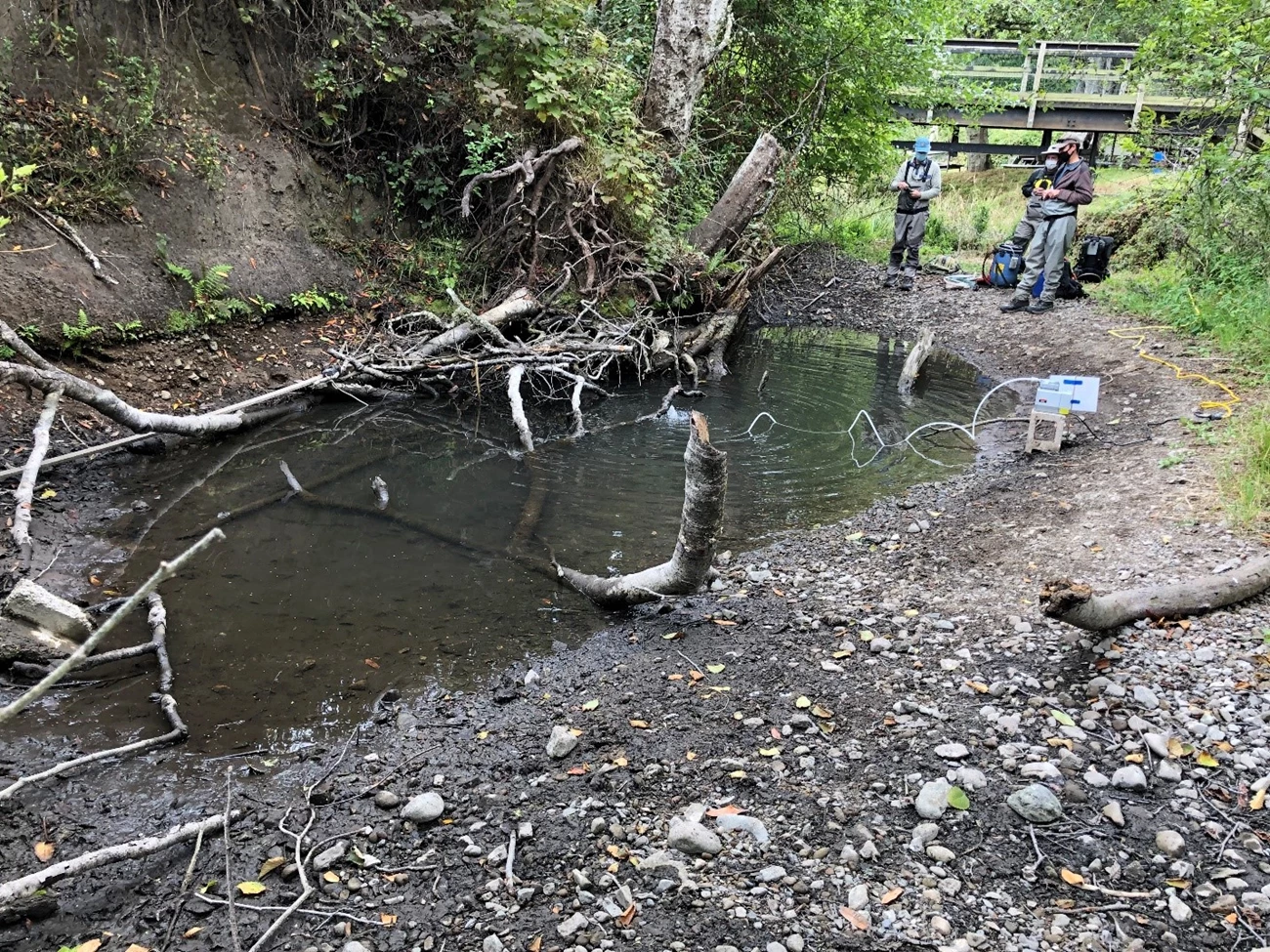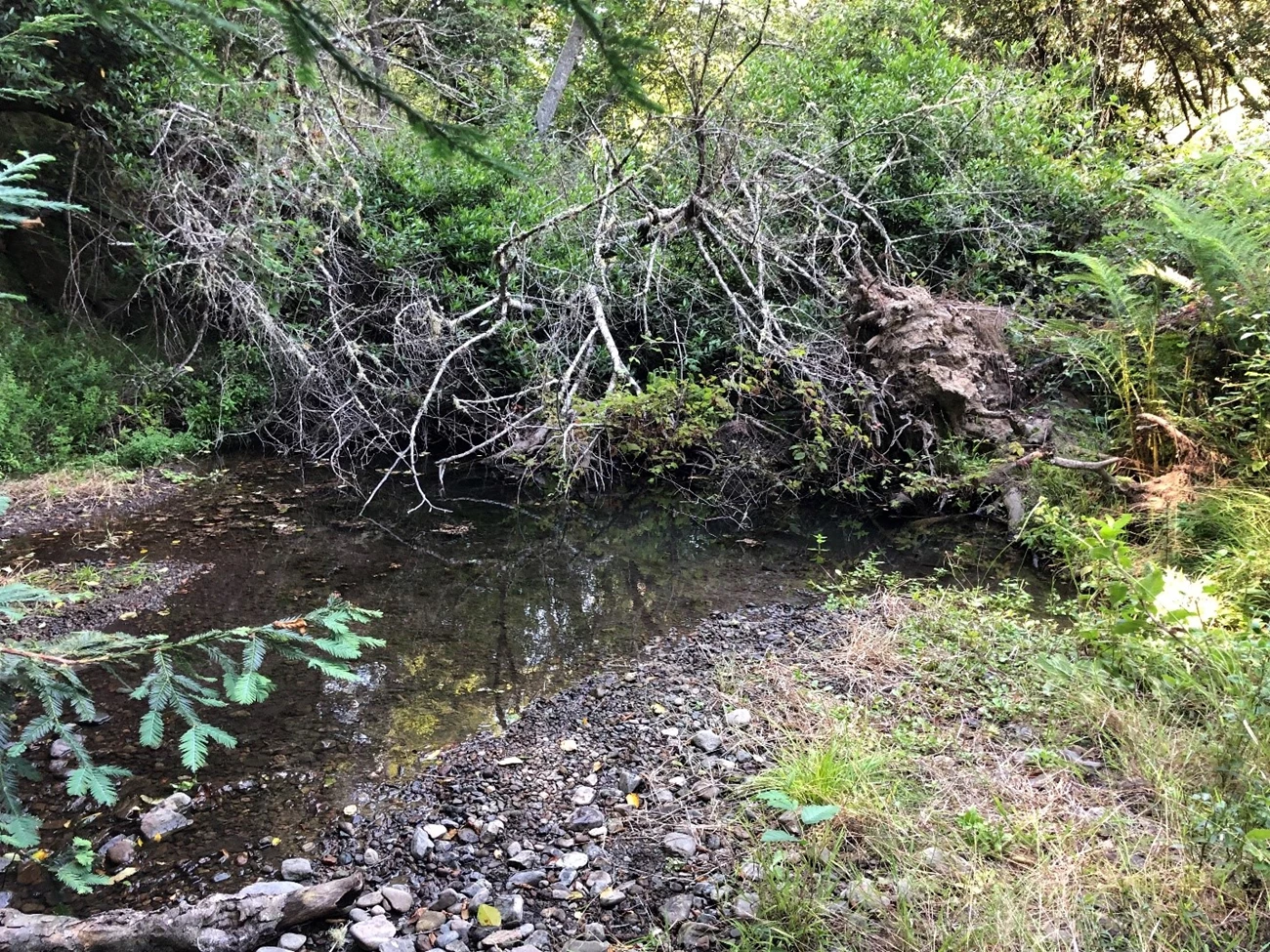Last updated: September 3, 2021
Article
As Drought Continues, Young Coho and Steelhead in Redwood Creek Need a Helping Hand
September 1, 2021 - This summer continues to be a challenge for both the San Francisco Bay Area Network Fisheries Team and the aquatic life that inhabit our coastal streams. Our team is working closely with park managers and regulatory agencies to help save juvenile coho and steelhead (collectively called “salmonids”) as our dry season continues.

NPS / Michael Reichmuth
Through our summer habitat monitoring, crews documented several drying pools in lower Redwood Creek in Golden Gate National Recreation Area. We also noted fish displaying signs of distress such as rising to the surface for air. The drying areas coincided with the location of the only coho redd observed in the creek this past winter. Not only is the lower section of Redwood Creek drying up rapidly, but the water quality is rapidly degrading. The most worrisome parameters are temperature and dissolved oxygen. Juvenile salmonids require cool, well oxygenated water to survive. For context, we typically see dissolved oxygen saturation at around 80% in these juvenile salmonid rearing pools. This season, average dissolved oxygen is around 60% saturation. In pools that fish were rescued from, average dissolved oxygen was only 25%.
Using snorkel surveys, we confirmed the locations of juvenile coho in lower Redwood Creek and reported observations to the Golden Gate aquatic ecologist. Everyone agreed. These fish needed to be relocated to other creek areas more likely to sustain adequate juvenile salmonid habitat throughout the summer.
With the help of the Muir Beach Community Services District, aerators were placed in pools with low dissolved oxygen until we could rescue the fish. The ensuing rescue spanned three days. In total, we relocated over 100 coho and 150 steelhead from drying pools to better habitat upstream. We will continue to monitor conditions in Redwood Creek and hopefully see these fish leave as healthy smolts next spring. Were it not for these actions, this entire cohort of coho would have likely perished.

NPS / Michael Reichmuth
As our monitoring focus moves to Olema Creek in September, we will be assessing conditions there as well to see if rescue actions are needed. Like Redwood Creek, the lower mile of Olema Creek is often reduced to isolated pools during drought years. It may become completely dry this year. However, in Olema Creek there is an added aquatic species of concern, the California freshwater shrimp. Though they have recently been doing well in lower Olema Creek, relocation efforts may be required to ensure that a robust population survives.
Stay tuned for further updates from our coastal creeks in the coming weeks!
For more information
- San Francisco Bay Area Network Salmonid Monitoring webpage
- Pacific Coast Science & Learning Center Coho & Steelhead webpage
- Contact Fisheries Biologist Michael Reichmuth
